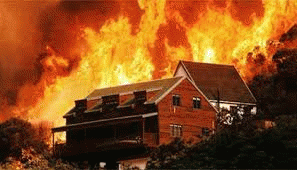p>The latest twist by government land-management agencies to avoid responsibility for catastrophic wildfire is to blame terrorists. Never mind that the real culprit for most catastrophic fires in light-fire ecosystems is 120 years of failed government fire-exclusion policies. Smokey the Bear, the symbol for this failed dysfunctional fire-suppression culture, lied when he said forest fires were bad for the environment. Decades of fire research have showed that light fires in light-fire ecosystems are essential to the very survival of these ecosystems.
A Huffington Post article written in 2013 says: "State Sen. Greg Brophy said yesterday on conservative radio that recent wildfires may have been started by terrorists and that 'the Governor and Democrats' have left Colorado vulnerable to terrorist attacks due to their failure to spend millions of dollars on air tankers to fight forest fires."
Smokey the Bear built the catastrophic fire power-keg over decades by suppressing light fires that swept the forest clean of debris buildup, and now Smokey wants to blame terrorists for lighting the fuse. This follows in footsteps of past and present successful attempts to avoid responsibility and blame catastrophic fire on arson, carelessness, lightning, drought, and now global warming, so as to get more funding for fire suppression, rather than support debris removal using light prescribed fire. Sure multi-million-dollar tanker planes make for good press public relations and corporate profits, but really it's just throwing dollars into the fire.
The United States and other nations like Australia are not going to be able to reverse the destruction of tens of millions of acres globally due by catastrophic fire, until they spend tens of billions of dollars on prescribed fire and also expensive mechanical removal, because the situation is now so extreme. Our most immediate problem is that the Smokey the Bear propaganda campaign has been extremely successful in brainwashing the public, creating a culture of fire suppression. So now we have to institute an equally ambitious program of raising awareness as to fire's proper role in light-fire environments and the dangers of fire suppression.
Once this public-relations operation is in full swing, then that will start the process toward really resolving the catastrophic fire problem. This rather than just throwing more money away to special-interest fire suppression, making the problem even worse and at the cost of so many lives, property loss, and ecosystem degradation. I have tried to do my part by writing Fire In Nature, A Fire Activist's Guide and making it free on its website to reach as many readers as possible. It takes a book for the reader to really understand this problem and demand correct actions be taken to change a culture of fire suppression to a culture of good fire management.






